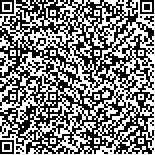Archive > Volume 41 Issue 8 > 2015,41(8):942-952. DOI:10.7519/j.issn.1000-0526.2015.08.003 Prev Next
Analysis of TyphoonTornado Weather Background and Radar Echo Structure
- Article
- Figures
- Metrics
- Preview PDF
- Reference
- Related
- Cited by
- Materials
Abstract:
Based on NCEP reanalysis data, conventional observations data, surface dense observation data and Doppler radar data, the environmental background of 10 tornadoes which occurred within spiral rain belt of typhoon and the evolution characteristics of echo structure of the tornadoes in F2 class and above were studied in detail. The results show that, firsthy typhoontornadoes occur in an environment with the weak convective available potential energy (200-1000 J·kg-1) and strong lowlevel vertical wind shear where the vertical wind shear between 0 and 1 km more than 10-2s-1. The storm relative helicity is very great and the typhoon tornado environment average bulk Richardson number is small, averagely below 40. Typhoontornadoes mostly occur on the right sides of the movingpaths of the typhoons where the 0-1 km vertical wind shear and storm relative helicity are greater.Typhoontornadoes are mainly generated in the spiral rainbands in the outsideregion of the typhoons. Before tornadoes come into being the convergence of wind direction and speed appears near the surface, but the temperature gradient is small. Secondly, the storms which produce typhoontornadoes are mini supercell storms, with cell centroid being about 2 km and stretching height about 5-7 km, accompanying the mesocyclones in horizontal scales about 2-4 km. The positive vertical vorticity is limited to below 4 km.
Keywords:
Project Supported:
Clc Number:


Mobile website









